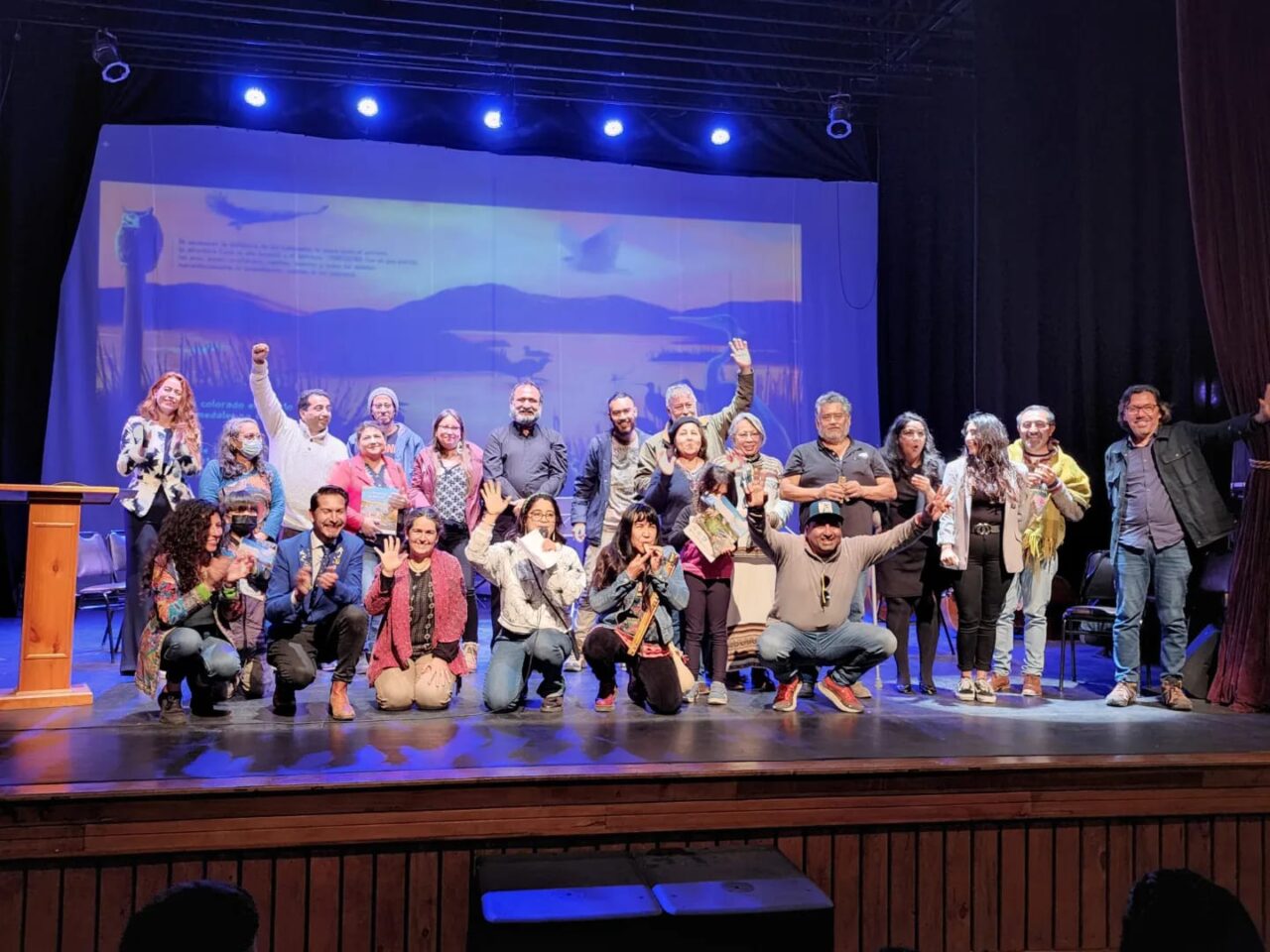The Wetland Orchestra: an inspiring story
The Centro de Estudios Avanzados en Zonas Áridas (CEAZA) [Advanced Studies in Arid Zones] is a group dedicated to scientific research and technological development in the Coquimbo region of Chile. It also hosts a Participatory Science Program aimed at bringing science closer to the local communities.
Since 2008 their team has created books and other educational materials to support the connection between people and the beauty and importance of the region’s ecosystems. Among these is the audiobook Wetland Orchestra (La Orquesta del Humedal), an illustrated storybook for people of all ages. The book was written by Paloma Núñez Farías and Alejandra Farías Köhnenkamp and was illustrated by Jorge Varela Ramos and Paula Demarco Vergara with the support of the fantastic CEAZA team. The premiere of the story was livestreamed online. It was heartwarming to see the entire creative team, joined by several community members who participated in the story’s creation, come together for the event. If you’d like to watch the audiobook’s launch (in Spanish), click on the image below.

The Wetland Orchestra is a story illustrated with species that inhabit the wetlands of the Coquimbo region. In the wetlands the waters of the mountains and the sea meet, creating an environment that supports local and migratory species that travel from distant places like the northern hemisphere, as well as supporting the people who visit the wetlands. Through its illustrations the book aims to raise awareness about the rich biodiversity of the wetlands and the environmental issues they face, such as pollution and habitat loss, and how we can all help improve and protect this region.
The authors began by interviewing the wetland protectors, classical musicians, and members of indigenous communities from the region. Inspired by the perspectives and knowledge gathered, the authors set out to craft the story. Their goal was not only to raise awareness and promote the care and protection of wetlands but also to incorporate music as a vital component of the message. Thus, The Wetland Orchestra was born.

In the story the wetland animals come together and create an orchestra with their captivating sounds. Each animal has its role, with the Cocoi heron acting as the conductor.
The wetland is full of music, life, and fascinating connections between its inhabitants and visitors. However, human activity, urbanization, and city growth have led to pollution of the soil, water, and air. This has caused degradation and even the disappearance of wetlands. The Wetland Orchestra ends with a call to take concrete actions to protect the wetlands in a participatory manner. It also suggests ways in which we can all help repair the damage done and protect the “musicians” living there, so that future generations can enjoy the benefits of the region’s wetlands, its landscapes, and the music of its wonderful inhabitants.

Why are wetlands important?
The Coquimbo region is home to 30 coastal wetlands, including areas such as swamps, lagoons, estuaries, and deltas. These wetlands play a crucial ecological role and provide benefits to both the human population and the environment: they act as natural water filters, provide habitat for migratory birds, and offer protection against natural risks like tsunamis. In the context of climate change, they are vital as carbon sinks. Additionally, they serve as spaces for recreation and well-being for the community.
How can you enjoy The Wetland Orchestra?
The Wetland Orchestra is distributed free of charge to people who live near the wetlands and also can be found in three formats (in Spanish) that you can download for free by clicking on the format you choose:
Book (PDF)
Audio Book (MP4 video of the animated book with illustrations, sounds, and sign language interpreter)
Audio (MP3 audio of the book)
Some of the organizations that have supported the development of the educational material are: the Coastal Wetlands and Shorebirds Project Initiative 2021 (Iniciativa de Proyectos de Humedales Costeros y Aves Playeras 2021), the GEF/MMA/UNEP Coastal Wetlands Project (Proyecto GEF/MMA/PNUMA Humedales Costeros), the Elqui Pilot Project (Piloto Elqui), the Regional Government of Coquimbo’s FIC Coastal Wetlands Project (Proyecto FIC Humedales Costeros del Gobierno Regional de la Región de Coquimbo), the Public Science Program of the Ministry of Science, Technology, Knowledge, and Innovation of the Government of Chile (Programa Ciencia Pública del Ministerio de Ciencia, Tecnología, Conocimiento e Innovación del Gobierno de Chile), the Institute of Ecology and Biodiversity (IEB), the Macaulay Library, REDAVES, Centinela Ambiental Tongoy, Surgencia, Conciencia Ecológica Association (Agrupación Conciencia Ecológica), Elke Indigenous Cultural Association (Asociación Indígena Cultural Elke), Adelaida Project (Proyecto Adelaida), Elqui Verde NGO (ONG Elqui Verde), Barrio del Mar, Caleta El Toro School (Escuela Caleta El Toro), Jorge Peña Hen Experimental Music School (Escuela Experimental de Música Jorge Peña Hen), the National Forest Corporation of the Coquimbo Region (Corporación Nacional Forestal Región de Coquimbo), the Regional Environmental Ministry of Coquimbo (Seremia de Medio Ambiente de la Región de Coquimbo), and the municipalities of La Serena, Coquimbo, and Canela.
Other informational videos (in Spanish) by CEAZA on the coastal wetlands of Coquimbo.
Photographs courtesy of Catalina Evans, Surgencia NGO, and CEAZA.
Page developed by Cassandra Nunez and Elisa España
